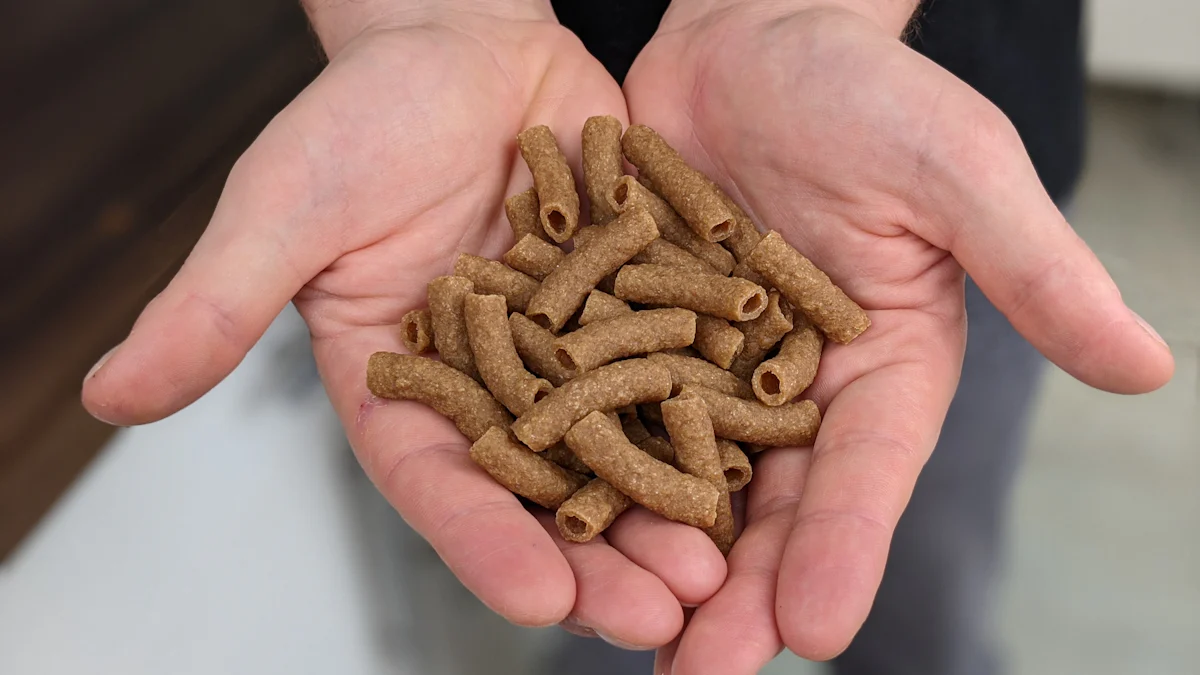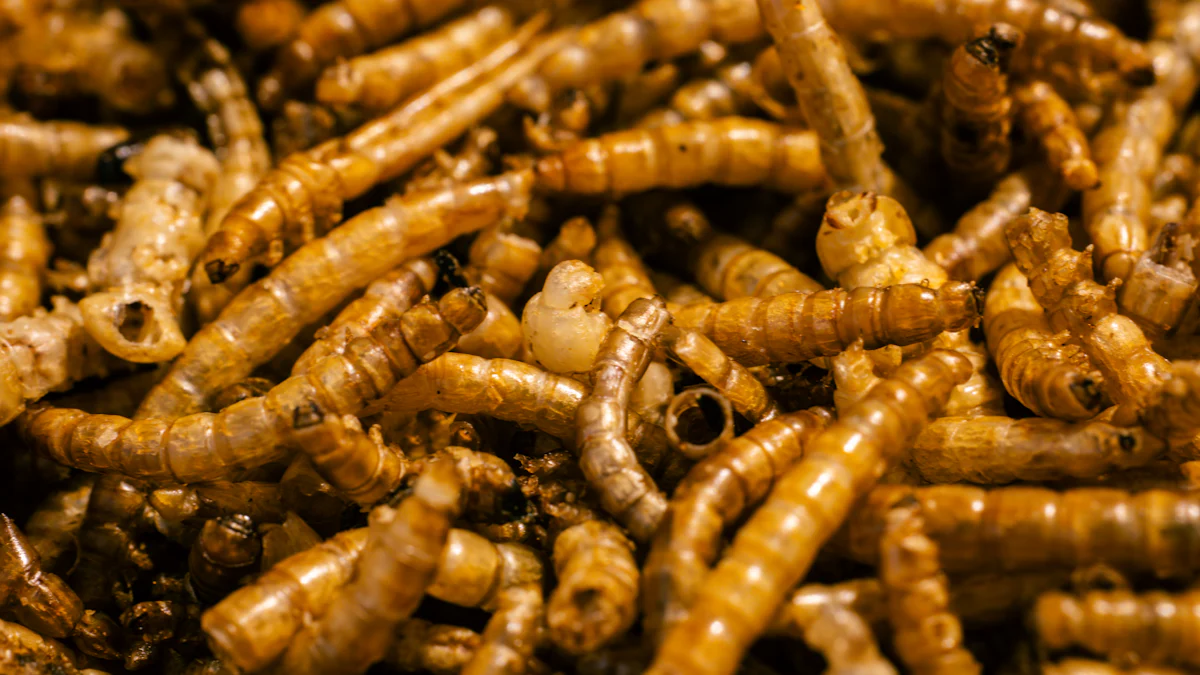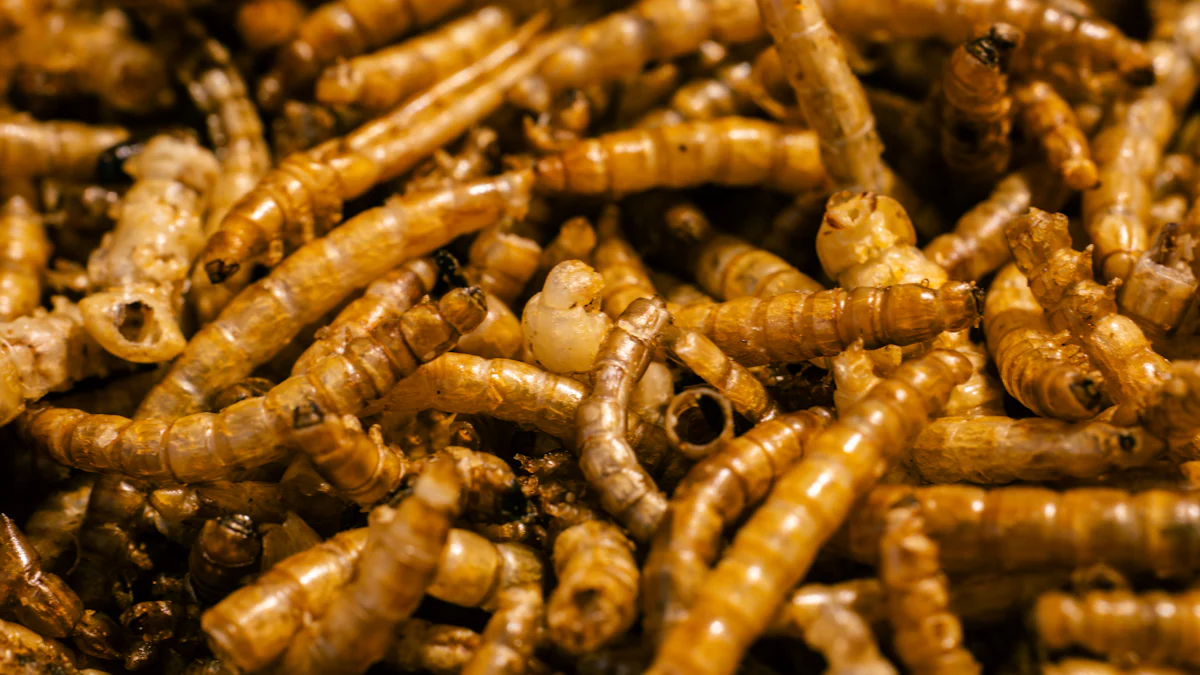
Have you ever thought about eating mealworms? It might sound unusual, but they’re packed with nutrients, especially protein. People in Asia and parts of Europe already enjoy them fried, roasted, or even live! Mealworm food offers more protein and calories than meat, plus essential fatty acids and amino acids. It’s a nutritious delicacy for humans and pets alike.
Key Takeaways
- Mealworms have lots of protein, about 53%, more than chicken. They also have all nine important amino acids, so they are a good meat substitute.
- Mealworms are low in carbs and calories, making them healthy. They are full of vitamins and good fats like omega-3 and omega-6.
- Farming mealworms is better for the environment. It uses less land and water than raising animals. Mealworms can also eat leftover farm scraps, reducing food waste.
Nutritional Value of Mealworm Food

Protein and Amino Acids
When I first learned about mealworms, I was amazed by how much protein they pack. Did you know dried mealworms contain about 53% protein? That’s even more than chicken, which has around 51.5%! Here’s a quick comparison:
| Protein Source | Protein Content (%) |
|---|---|
| Dried Mealworms | 53 |
| Live Mealworms | 20 |
| Chicken | 51.5 |
Mealworms also provide all nine essential amino acids. These amino acids are crucial for muscle growth, repair, and overall health. If you’re looking for a protein source that’s both nutritious and sustainable, mealworms are a fantastic choice.
Mealworms are an excellent source of protein, containing all nine essential amino acids. They offer a protein content comparable to beef and chicken, making them a viable alternative to traditional animal proteins.
Vitamins, Minerals, and Healthy Fats
Mealworm food isn’t just about protein. It’s also loaded with vitamins and minerals that our bodies need. For example, they’re rich in B vitamins like B12, which is often missing in plant-based diets. They also contain iron, zinc, magnesium, and potassium. These nutrients help with energy, immunity, and overall health.
On top of that, mealworms are a great source of healthy fats. They’re packed with unsaturated fats, including omega-3 and omega-6 fatty acids. These fats are good for your heart and can reduce the risk of cardiovascular diseases.
Low in Carbohydrates and Calories
If you’re watching your carbs or calories, mealworms are a smart option. They’re low in carbohydrates, with only about 18% on a dry matter basis. Plus, they provide more calories and protein per 100 grams than traditional meats. This makes them a nutrient-dense choice for anyone looking to maximize their diet.
Mealworm food is truly a powerhouse of nutrition. Whether you’re after protein, vitamins, or healthy fats, mealworms have you covered.
Safety and Risks of Eating Mealworms
Addressing Allergies and Sensitivities
When I first heard about mealworms as food, I wondered if they could cause allergies. It turns out they can, especially for people allergic to shellfish or dust mites. Mealworms contain allergens like tropomyosin, arginine kinase, and troponin C. These are similar to allergens found in crustaceans and cockroaches. If you have a shellfish allergy, you might want to be cautious.
Food labels for mealworm-based products often include allergen warnings. This helps people avoid unexpected reactions. I’ve also read that occupational allergies can occur for workers handling mealworms regularly. So, it’s important to stay informed and consult a doctor if you’re unsure about trying mealworm food.
Ensuring Proper Farming and Processing
I’ve learned that farming mealworms safely requires strict standards. Farmers follow rules similar to those for livestock. They monitor the rearing process and control the mealworms’ diet to avoid contaminants. Workers also receive training on hygiene and biosecurity.
Processing is just as important. Techniques like blanching, freezing, and drying reduce harmful microbes. Regular testing ensures the mealworms don’t contain heavy metals or antibiotics. These steps make sure the mealworms are safe to eat.
Avoiding Contamination and Disease Risks
Contamination risks exist, but they can be managed. Pathogens, heavy metals, and toxins are the main concerns. Farmers use good hygiene practices and monitor the mealworms’ environment. They also test the feed to ensure it’s clean and safe.
Companies often go beyond legal requirements to improve safety. For example, they use hazard analysis systems to identify and fix potential problems. When mealworms are farmed and processed correctly, the risks of contamination drop significantly.
Mealworm food is safe when proper precautions are taken. Knowing how it’s farmed and processed can help you feel confident about adding it to your diet.
Mealworm Food and Sustainability

Low Environmental Impact
I’ve always been amazed by how much traditional livestock farming impacts the environment. Did you know that raising cattle produces more greenhouse gases than all the cars on the road? That’s why I find mealworm farming so exciting. It has a much smaller ecological footprint. Producing 1 kilogram of edible mealworm protein releases only 20.4 kilograms of CO2-equivalent emissions. That’s way less than beef or pork!
Mealworms also don’t need as much land. They require just 10% of the space needed for beef production. Plus, they emit far less methane and ammonia compared to cows and pigs. Their compact farms even reduce transportation needs, cutting down carbon emissions further. It’s clear to me that mealworms are a more sustainable choice for the planet.
Efficient Resource Use in Farming
One thing I love about mealworms is how little they need to thrive. They use significantly less water and land than traditional livestock. For example, cattle farming guzzles water, but mealworms barely make a dent in water supplies. This makes them perfect for areas where water is scarce.
Here’s a quick comparison:
| Resource | Mealworms | Traditional Livestock |
|---|---|---|
| Land | Less | More |
| Water | Less | More |
| Greenhouse Gases | Fewer | More |
Mealworms also eat less feed, which boosts sustainability. They can even consume agricultural by-products, like leftover grains, instead of competing with humans for food crops. This efficient use of resources makes mealworm farming a smart choice for the future.
Role in Reducing Food Waste
I’ve always hated seeing food go to waste. That’s why I think mealworms are so cool. They can eat agricultural by-products, like fruit peels or vegetable scraps, that would otherwise be thrown away. This helps reduce pressure on global food systems.
Farmers also use organic residual streams to feed mealworms. It’s a win-win situation. The mealworms get a nutritious diet, and we get a sustainable protein source. By turning waste into food, mealworms play a big role in fighting food waste and creating a more sustainable future.
Incorporating Mealworm Food into Your Diet
Popular Mealworm-Based Products
When I first explored mealworm food, I was surprised by the variety of products available. Companies worldwide are creating innovative options for both humans and animals. Here are some popular brands:
- Entomo Farms: Offers edible insects, including mealworms, for human consumption.
- Protix: Produces mealworm-based protein for animal feed and pet food.
- Ynsect: Focuses on mealworm farming for agriculture and aquaculture.
- Beta Hatch: Supplies mealworms for animal feed and farming.
- ŸnMeal: Specializes in sustainable mealworm protein.
- MealFood Europe: Creates insect-based ingredients, including mealworms.
- EnviroFlight: Develops sustainable mealworm products.
- AgriProtein: Converts organic waste into mealworm protein.
- Tiny Farms: Provides solutions for mealworm protein production.
- Micronutris: Offers edible mealworms for human diets.
Mealworm products come in various forms, such as whole mealworms, powders, and meals. These options make it easy to incorporate them into your diet or even your pet’s meals.
| Product Type | Applications |
|---|---|
| Whole Mealworm | Animal Feed, Human Consumption |
| Mealworm Powder | Animal Feed, Human Consumption |
| Mealworm Meal | Animal Feed, Pet Food |
Cooking and Preparation Tips
Cooking with mealworms is easier than you might think. I’ve tried roasting them at 200°C for 10-15 minutes, and they turned out crispy and delicious. You can also fry them for a crunchy topping on salads or grind dried mealworms into flour for baking.
Here are some simple ways to prepare mealworms:
- Roast them for a snack or salad topping.
- Sauté with garlic and chili in butter for a flavorful dish.
- Add them to pasta sauces, stir-fries, or baked goods.
- Use mealworm flour in smoothies or bread recipes.
I once sautéed mealworms with garlic and chili, and the result was amazing. They had a crispy texture and an earthy aftertaste that paired perfectly with rice and vegetables. If you’re feeling adventurous, try adding them to mac and cheese or even pizza!
Tip: Season mealworms with your favorite spices to enhance their flavor. They’re versatile and can complement many dishes.
What Do Mealworms Taste Like?
I know you’re probably wondering—what do mealworms actually taste like? To me, they have a mild, nutty flavor, similar to almonds or pine nuts. When steamed, they give off a sweet corn-like aroma. Roasted or fried mealworms remind me of shrimp or fried oil, with a slightly earthy and nutty undertone.
Some people compare their flavor to ground turkey, but with a crunchier texture. They’re not overpowering, which makes them easy to blend into recipes. Whether you’re baking, frying, or roasting, mealworms add a unique twist to your meals without being too bold.
If you’re new to mealworm food, start with roasted mealworms. Their mild flavor and crispy texture make them a great introduction to this sustainable protein source.
Mealworm food is a game-changer. It’s nutrient-packed, eco-friendly, and versatile. People in Asia and Europe already enjoy it fried, roasted, or even live! While allergies and proper farming need attention, mealworms’ protein, vitamins, and low environmental impact make them a smart choice. I believe they’ll soon become a global dietary staple.
FAQ
Are mealworms safe to eat?
Yes, they’re safe when farmed and processed properly. People in Asia and Europe already enjoy them fried, roasted, or even live! Just check for allergies first.
What nutrients do mealworms provide?
Mealworms are packed with protein, vitamins, and healthy fats. They’re a nutritious delicacy for both humans and pets, offering essential amino acids and omega-3s.
How do mealworms taste?
To me, they taste nutty, like almonds or pine nuts. Roasted mealworms have a crispy texture and an earthy flavor. They’re mild and easy to add to recipes.


